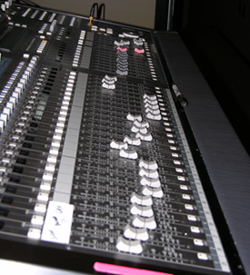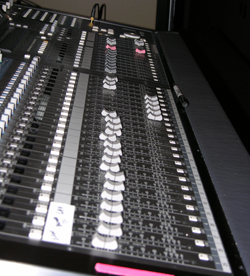A few years ago, I was given tickets to a concert at the local arena. It was a co-headlining show where one act played, then the other, ending with both acts playing together.
Being the supreme el cheapo, I eagerly accepted the tickets and acted like Romeo when informing my wife that I was taking her out.
We arrived early and naturally I took stock of the audio setup. Each act had its own reinforcement system complete with separate FOH, monitor mix positions, and line arrays du jour.
Admittedly, one act had larger arrays, but like my dad once told me, when fishing, it’s the wiggle that gets the fish, not the size of the worm.
For a few moments I entertained the thought of going down and schmoozing with the front-of-house engineers, but that would have entailed a lot of smooth talking and/or somehow muscling my way past Butch and Bubba (one of which I’m sure had two x chromosomes) to get to the floor. I abandoned the thought and contented myself with enjoying the show to come.
Unfortunately, the audio for act one was a disappointment. In fact, it was horrible.
Act two, on the other hand, sounded fantastic. Why?
Was it because act two had the larger system and thus could put out greater SPL? Nope – I’m too old to fall for that one. When someone declares an immediate and unequivocal improvement in what they’re listening to, I get out my SPL meter and compare the levels. Don’t even try to get that one past me.

What I heard was the difference between running a console at unity and running it without headroom. You can tell the difference just by listening? Yes!
.
Good unity mixes sound open, alive, immediate and unrestrained while mixes overdriven in the console sound small, closed, lifeless and harsh.
It has been my observation that when the system is properly set up and aligned, and the sound ain’t so great, the console faders tend to look like Picture A.
Conversely, when it sounds good, the faders look like Picture B. Where the faders are positioned has everything to do with the channel preamp gain setting.

When I first got into sound as a wee lad, one of the earliest questions I had was how to properly set the preamp gain on the console.
.
The answer, of course, was to turn the knob until the little red light flashed and then back it down until the flashing stopped. Not. This produced maximum signal-to-noise ratio, but there was absolutely no headroom at the mix bus summing amplifier at unity.
Today, I so wish I could slap that person like they deserve, but that’s what I knew and that’s what I did. My mixes looked like Picture A, and most importantly, sounded like it. Something felt audibly wrong, but I couldn’t find a way to hear outside of that paradigm.
Over time, I gradually changed the way I set the preamp gain, evolving to soloing up the channel and adjusting the knob until I saw what I believed I should see on the console meter. Yet my paradigm was still about adjusting by sight – until being confronted by Delwyn Brooks.















